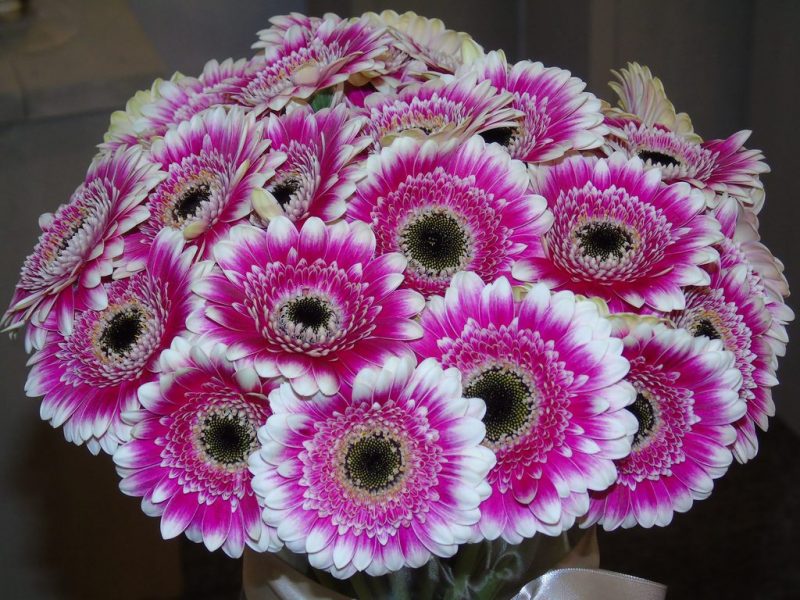You can learn how to grow gerbera from cuttings in as simple as three steps. And if you have a greenhouse, you already have a head start in rooting them because you can provide the ideal conditions for the cuttings to grow. Remember that propagating any plant from cuttings is only meticulous in the first part where you’re encouraging root development.
Growing gerberas that are typically treated as seasonal annuals don’t have to be limited if you have a greenhouse. You can create the optimal environment to care for them year-round. More so, starting cuttings indoors will ensure healthy transplants that can withstand the outdoor conditions later on.

How To Propagate Gerbera From Cuttings
Step #1. Preparation
Before you take gerbera cuttings, you want to prepare the site and the plant. The area or containers should be ready for rooting the cuttings, so you don’t risk drying them while they’re waiting. The plants themselves should also be at optimal conditions to provide healthy cuttings, and they won’t get stressed after you take them.
You can consider growing gerberas in the greenhouse if your climate is fluctuating. The stable conditions will also prevent stressing the gerberas when you take cuttings. Pots with potting soil should suffice for gerbera cuttings, but some gardeners make the mix themselves.
Step #2. Cutting collection and preparation
The best time to collect cuttings on gerbera daisies is when they are actively growing in the summer. Choose a healthy plant and take 6-inch sections for optimal rooting. However, don’t forget to prepare the cuttings before planting.
Much like with other plant cuttings, you want to remove the leaves at the bottom since they can encourage rot when in contact with the medium. It would be best if you also got rid of any flowers on your cuttings to help them focus on root development.
Step #3. Planting and maintenance
After preparing the cuttings, encourage quicker root growth by dipping their ends in rooting hormone. Then, you should be ready for planting, but don’t forget to moisten the medium. The University of Vermont emphasizes the importance of keeping gerberas somewhere moist for optimal health.
Besides spraying the medium, you can even create a humid environment before putting the containers in the greenhouse. Cover each pot with a plastic bag to help conserve moisture and then place them in the greenhouse to maintain the conditions more comfortably.
Select an area that is bright but out of direct sunlight to help the cuttings grow. You can gently tug the cuttings to check for roots, and you can keep them well-watered as maintenance without the plastic cover. However, remember that you don’t want to overwater the gerberas as this can damage them.
Planting Gerberas
Location
Starting gerbera daisies indoors is advantageous until you can plant outside in spring. Depending on where you are, you can treat the plants as annuals and grow them somewhere with well-draining soil and full sun to encourage healthy blooms. However, don’t forget to test your soil to check the pH level and if you need to do amendments for its nutrients and structure.
Caring and common problems
Gerberas thrive best if you feed them well. You can add a balanced fertilizer in the bed and provide fertilizer at each watering. You should also check the soil if it gets too dry to keep the gerbera daisies from wilting, but be mindful of root rot if the soil is overly wet.
Another thing to remember to avoid diseases is optimal spacing for good air circulation among your plants. You can also water early in the morning, so they don’t have wet foliage by night time. But if you notice powdery mildew, you can always use organic sprays.
Overall, gerbera daisies don’t face many issues. Proper maintenance and consistent environmental conditions should keep infestations or fungal diseases at bay. However, be on the lookout for aphids to address them quickly.
How To Prune Gerbera
Another maintenance practice to remember when growing gerberas is pruning. This will help the plant looking neat and well-kept while also produce healthy blooms. Be on the lookout for fading flowers throughout the growing season and remove them before the petals fall off.
Cut where the stems emerge from the leaves to prevent seed development. But besides deadheading, you can also trim or pinch the unhealthy-looking leaves throughout the season to create better foliage. Both deadheading and trimming aim not just for aesthetic value but also for helping the plant regrow healthier parts.
Lastly, you want to cut back gerberas before the first frost. Cut them to an inch tall and transfer them to the greenhouse for protection. If you’re somewhere warmer, you can simply mulch the plants and overwinter outdoors.
Conclusion
Gerbera daisies are relatively easy to propagate yourself. However, the best technique to learn is knowing how to grow gerbera from cuttings compared to starting them from seeds. Simply select sections from a healthy plant while it’s actively growing and stick one per pot.
Maintain moisture and cover the container with plastic before placing them in the greenhouse. Afterward, you can transplant gerbera daisies in spring and provide fertilizer and water for optimal blooms. With proper care and consistency of the conditions, you shouldn’t face many problems and issues with gerbera daisies.
